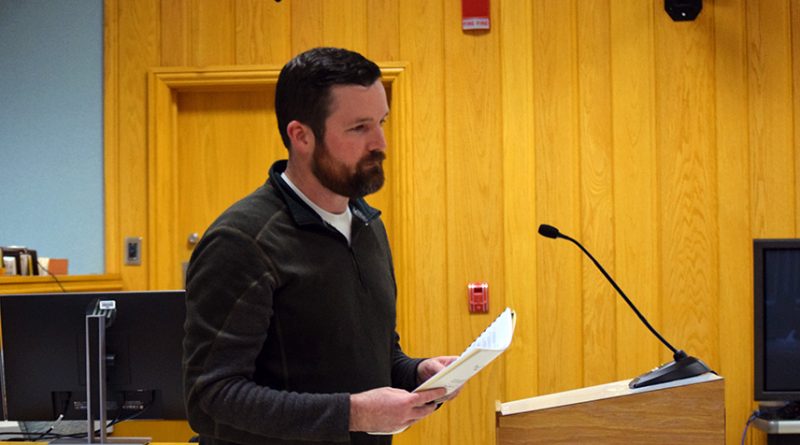Holman Column: Strapped and capped, but some help on the way
There is a slow unraveling occurring in town and village halls, council chambers and county board rooms across Wisconsin.
Many in public service tend to talk about it in hushed tones or only among their peers because—truth be told—we don’t know if this is another year where we’ll manage to find enough available funding to scrape by.
There’s also the uncertainty around whether or not there’s ever going to be a light at the end of this tunnel, and if there is, whether that light will be a ray of hope or an unavoidable fiscal freight train that will jump the tracks and land in our laps.
Now, there might be some help on the way.
In his 2020 State of the State address, Governor Evers announced that he’s creating an Office of Rural Prosperity as well as a Blue Ribbon Commission on Rural Prosperity. The success or failure of our rural areas will have serious implications for the entire state, so the timing of this initiative is right.
I think the Commission will find that rural leaders and communities are eager to share their experiences and struggles so that the Governor, state legislators, and others can fully appreciate the situation we’re in.
Local leaders—myself included—don’t want to alarm their constituents, but there are formidable challenges associated with the costs of providing the services and programs that the public generally wants and expects to be there while a state-imposed levy limit is in place.
For a long time now, local governments have been faced with double-digit or higher increases in costs and single-digit or lower increases in their budgets. If that’s not a good starting point for the Commission, I don’t know what is.
People say that the government should run like a business, and in general, I’d agree. However, as a farm-business owner myself, I’d ask those people how they expect a business to succeed if the costs for providing its services go up beyond its ability to raise its prices.
Unlike farmers, local governments aren’t in business to make a profit, but farmers are in an eerily similar predicament when it comes to finances. Their prices are dictated to them, their costs of doing business are higher than ever, customers want their products and expect them to be inexpensive, and they’re retiring, getting out, and/or going bankrupt at an alarming rate. If local governments can’t keep up with the market, should they, too, go out of business?
The state limits general operating levy increases to 0% or a growth percentage called “Net New Construction.” That percentage varies year-to-year, and in most cases, it falls short. According to the Wisconsin Department of Revenue’s data for 2018, only 8 of Wisconsin’s 72 counties had Net New Construction above 2%. Just over half of all counties were at 1.25% or less. Over a third were below 1%!
The inflation rates alone in 2016, 2017 and 2018 were 1.3%, 2.1% and 2.4% respectively.
That’s tough math and more often than not it puts us all further behind and—bit by bit—unable to meet the demands of current programs and services. It’s no coincidence that we’re seeing an uptick in the use of referendums to find funding for what the public values.
The “either/or” situation local governments are finding themselves in is simply unacceptable (and unbelievable) to residents across the state.
Is there any good news? Yes and no. For example, last year the state legislature did respond to the outcry from across Wisconsin about the prolonged crisis in child welfare and other programs in Health and Human Services (HHS). Thankfully, Portage County received an increase in state funding to the tune of approximately $321,000. That sort of support was no guarantee, but I was very grateful for it because the deficits generated by Portage County HHS in this one area alone were roughly $500,000 in 2019.
To be clear, that is a deficit that local governments have no control over when they occur. We simply watch the deficit grow and wonder where it’s going to stop. Roughly two-thirds of our budget is wrapped up in similarly mandated programming, services, and personnel. So the potential for a fiscal freefall in these areas is significant if trends remain negative and things really take a turn for the worst.
For Portage County, it meant taking $178,500 (54%) of our allowed increase of $331,322 for the entire county budget and routing it to HHS so that we made up the difference. If the state hadn’t come through, we would’ve had to find the $321,000 elsewhere in the budget. Like the state, we do have a rainy day fund, but it has been very rainy (and windy) lately and the floods and storms are making budget demands of their own that are difficult to keep up with.
Will the state come through again as they did for child welfare? Let’s hope so. Prior to the increase in funding for 2020, counties across the state had to increase levy funding for child welfare services by 35% between 2011 and 2016. That means—for a while now—counties have been funding 63% of these state-mandated services while state statute requires a county funding level of only 9.89%.
Now, I don’t think that the initial idea for putting a levy limit in place was all bad. It’s good to ask the government to find more efficiencies and to have constructive conversations about how it can further improve how it provides services and programs to people. That said, it’s a policy that—at a minimum—needs updating and some additional, built-in flexibility that addresses the realities of today.
If we can’t improve the policy, we should abandon it altogether so that we don’t fall even further behind. If the state legislature is inclined to keep the policy in place, perhaps an adjustment for certain areas that they recognize are key issues for local governments to participate in is in order.
For example, Wisconsin is already behind the curve in economic development given the many demographic challenges it’s facing with its workforce shortage. That will undoubtedly be a major focus area for the Governor’s Blue Ribbon Commission and others who are rising to meet the challenge.
Agreeing to a certain percentage increase to the levy in order to provide dedicated funding to such efforts would allow local governments to more easily participate in that work and contribute to its success. In more ways than one, the future of our state hinges upon those kinds of efforts yielding tangible results.
It should be obvious to say so, but if counties and municipalities do better, the public is happier. If counties and municipalities do better, the business sector is more successful. If counties and municipalities do better, then Wisconsin wins and we can attract and retain the people we’ll need for the stronger future we all want to be a part of.
And if the comments and requests my office regularly receives are any indicators, this is where county residents, the local and regional business community, elected leaders, and other interested parties really want us to be.
Portage County Executive Chris Holman can be reached at (715) 346-1997.


